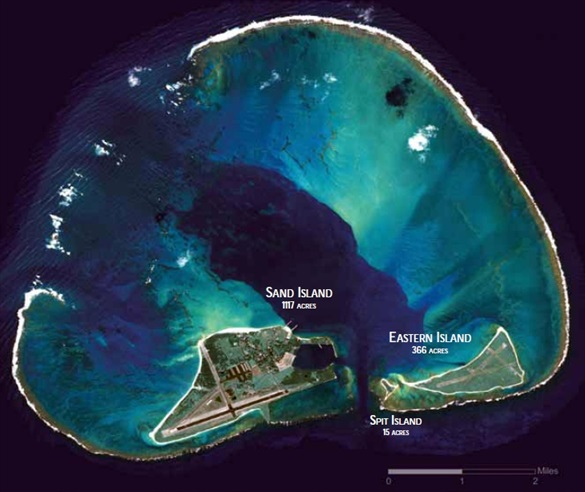MIDWAY, BATTLE OF (JUNE 1942)
| When | June 4–7, 1942 |
| Where | West of Midway Atoll—two small islands—in the Central Pacific, as well as the Northern Pacific near the Aleutians (diversionary)
|
| Who | Japanese naval forces under Admirals Isoroku Yamamoto (1884–1943), Commander-in-Chief of the Japanese Combined Fleet, and Chuichi Nagumo (1887–1944), in command of 1st Carrier Striking Force, versus the U.S. Pacific Fleet under Admirals Chester Nimitz (1885–1966), Commander of the Pacific Fleet; Raymond Spruance (1886–1969) in command of Task Force 16; and Frank Jack Fletcher (1885–1973) in command of Task Force 17. |
| Why | The capture of the American outpost at Midway, less than 1,200 miles west of the Hawaii, would push Japan’s defensive perimeter considerably eastward (the Doolittle Raid on Tokyo was fresh in their leaders’ minds) and possibly open the Hawaiian Islands to repeated aerial bombardment and even invasion. A feint against the Aleutian island of Attu in Alaska (June 6, 1942) was ordered as the Japanese kicked off their campaign to occupy Midway, destroy the remaining elements of the United States Navy in the Pacific, and force the U.S. to capitulate on Japanese terms following a second demoralizing defeat (the first had been Pearl Harbor). |
| What | The Japanese armada of four aircraft carriers (Akagi, Kaga, Soryu, and Hiryu) carrying 248 combat aircraft, 11 battleships, and numerous smaller vessels opposed an American force that included three aircraft carriers (USS Enterprise, USS Hornet, and USS Yorktown), 233 carrier- and 127 Midway-based aircraft (including high-level bombers), zero battleships, and a variety of smaller craft. The Japanese plan, codenamed Operation MI, was to lure part of the U.S. fleet away towards the Aleutians and, in a surprise attack, capture Midway, which offered a base within striking distance of Hawaii. |
| Outcome | A turning point in the Pacific War, the battle was America’s first major victory against the Japanese and a devastating defeat for Japan (though few in Japan, including members of the military, knew it at the time). Lost were all four Japanese aircraft carriers (the bulk of the Japanese carrier fleet), 248 aircraft, between 3,000-plus and nearly 5,000 sailors and airmen (sources vary), and a heavy cruiser (Mikuma) for a cost of one American aircraft carrier (USS Yorktown), 150 planes, 307 men, and a destroyer (USS Hammann). American code breakers had cracked the Japanese naval code, JN 25, and were able to determine the date of the Japanese attack and location of the Japanese surface fleet and invasion force of 500 soldiers. This enabled the forewarned U.S. Navy to set up an ambush of its own. After the failure of Midway, and the exhausting attrition of the Solomon Islands campaign (January 1942–August 1945), Japan’s shipbuilding and pilot training programs were unable to keep pace in replacing their naval and veteran aircrew losses, and this resulted in the loss of Japanese naval initiative and superiority in the Pacific. After Midway, the U.S. steadily increased its output of ships, planes, and aviators, allowing its navy to move from a position of operational parity to one of clear-cut supremacy for the remainder of the war. Also for the remainder of the war Japanese soldiers neither conquered nor kept another square inch of Pacific soil. |
![]()
The Battle of Midway—A (Over-the-Top) John Ford Documentary for the U.S. Navy Department, 1942
![]()


 History buffs, there is good news! The Daily Chronicles of World War II is now available as an ebook for $4.99 on Amazon.com. Containing a year’s worth of dated entries from this website, the ebook brings the story of this tumultuous era to life in a compelling, authoritative, and succinct manner. Featuring inventive navigation aids, the ebook enables readers to instantly move forward or backward by month and date to different dated entries. Simple and elegant! Click
History buffs, there is good news! The Daily Chronicles of World War II is now available as an ebook for $4.99 on Amazon.com. Containing a year’s worth of dated entries from this website, the ebook brings the story of this tumultuous era to life in a compelling, authoritative, and succinct manner. Featuring inventive navigation aids, the ebook enables readers to instantly move forward or backward by month and date to different dated entries. Simple and elegant! Click 











